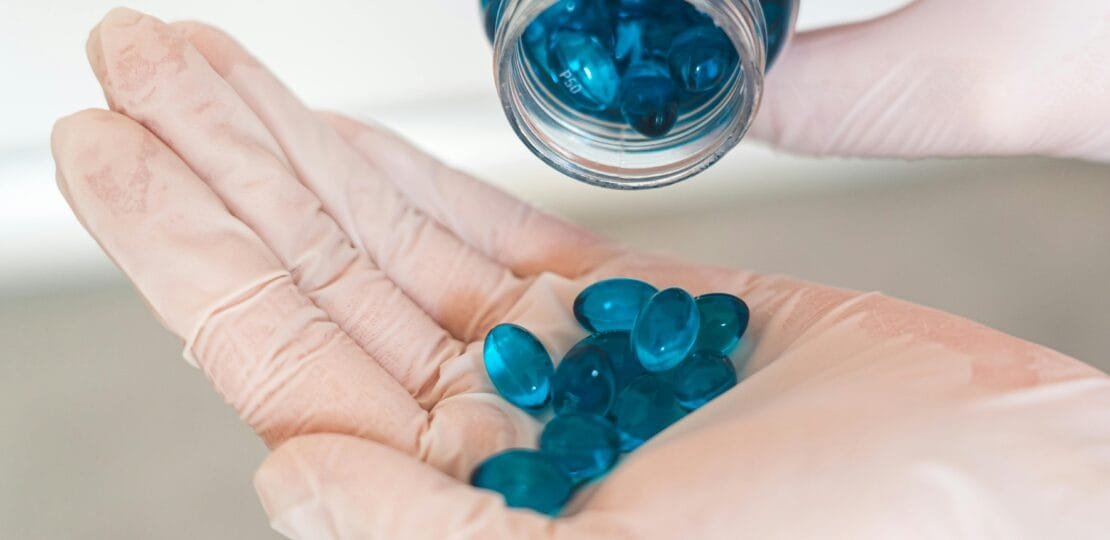The Impact of Dutasteride on Male Pattern Hair Loss: An In-Depth Analysis
December 2, 2024 | by Chouhan

Introduction to Male Pattern Hair Loss
Male pattern hair loss, clinically known as androgenetic alopecia, is a prevalent condition that affects a significant number of men worldwide. Research indicates that approximately 50% of men will experience some degree of hair loss by the age of 50, with the pattern becoming increasingly noticeable as they age. This condition is characterized by a progressive thinning of hair typically starting at the temples and crown, ultimately leading to partial or complete baldness.
The etiology of male pattern hair loss is primarily linked to a combination of genetic predisposition and hormonal changes. The condition is heavily influenced by testosterone and its derivative, dihydrotestosterone (DHT). Genetic factors dictate the sensitivity of hair follicles to DHT, resulting in miniaturization of the follicles, hence reducing hair growth. This biological process not only disrupts the natural hair growth cycle but also shortens the lifespan of hair follicles, leading to visible hair thinning
Beyond its physiological implications, male pattern hair loss can inflict significant psychological and social burdens on affected individuals. Many men associate a full head of hair with youthfulness, attractiveness, and virility. Thus, experiencing hair loss can lead to decreased self-esteem, anxiety, and feelings of inadequacy. Socially, these men may perceive themselves as aging prematurely, which can alter their interactions in both personal and professional settings.
As the impact of male pattern hair loss continues to influence many aspects of life for those affected, exploring effective treatment options becomes imperative. The consideration of dutasteride, a medication primarily designed for prostate health, has emerged as a potential solution for mitigating the effects of this common condition. The subsequent sections will delve into the efficacy and mechanisms of this treatment.
What is Dutasteride?
Dutasteride is a medication classified as a 5-alpha-reductase inhibitor, a category of drugs that plays a crucial role in the management of conditions linked to dihydrotestosterone (DHT) levels. The primary action of dutasteride is to inhibit the enzyme 5-alpha-reductase, primarily found in the prostate gland and hair follicles. This enzyme is responsible for converting testosterone into DHT, a potent androgen linked to male pattern hair loss and benign prostatic hyperplasia (BPH).
Approved by the U.S. Food and Drug Administration (FDA) in 2001 for the treatment of BPH, dutasteride has also been prescribed off-label for male pattern hair loss or androgenetic alopecia. The medication is particularly significant for men experiencing hair loss due to its effectiveness in reducing DHT levels. Research indicates that dutasteride can lower serum DHT levels by as much as 90%, thereby addressing the root cause of hair thinning for many men.
The mechanism of action of dutasteride involves the selective inhibition of both Type I and Type II isoforms of the 5-alpha-reductase enzyme, providing a broader reduction of DHT compared to finasteride, another common 5-alpha-reductase inhibitor. By lowering the production of DHT, dutasteride minimizes the androgen’s effects on hair follicles, promoting hair regrowth and helping to stabilize hair loss. It is important to note, however, that this medication may require several months of continuous use to achieve visible results.
Healthcare providers typically weigh the potential benefits of dutasteride against possible side effects, making it essential for patients to engage in thorough discussions regarding their treatment options. Overall, dutasteride represents a promising therapeutic strategy for men facing challenges with hair loss due to its comprehensive action on DHT synthesis.
How Dutasteride Works for Hair Loss
Dutasteride is a medication that plays a pivotal role in the treatment of male pattern hair loss, primarily by targeting the hormonal pathway associated with hair follicle miniaturization. The active ingredient in Dutasteride inhibits both type I and type II 5-alpha reductase enzymes, which are responsible for the conversion of testosterone into dihydrotestosterone (DHT). DHT is a potent androgen that has been identified as a major contributor to androgenetic alopecia, commonly known as male pattern hair loss. By effectively lowering the levels of DHT, Dutasteride addresses one of the fundamental causes of hair thinning and loss in men.
Research has demonstrated that Dutasteride is more effective in suppressing serum DHT levels compared to other available treatments, such as finasteride. While finasteride primarily targets the type II isoform of the enzyme, Dutasteride inhibits both isoforms, leading to a more substantial decrease in DHT concentration. This increased efficacy translates to a more favorable environment for hair follicles, facilitating their rejuvenation and reducing the rate of miniaturization associated with hair loss patterns.
The reduction of DHT not only slows down the progression of hair loss but also promotes the potential for hair regrowth. Hair follicles that have been affected by the damaging effects of elevated DHT levels can resume their normal cycle, leading to thicker and healthier hair strands. Through this mechanism, Dutasteride does not merely halt further hair loss but actively contributes to the restoration of previously affected areas, enhancing overall hair density.
In conclusion, the unique mechanism of action of Dutasteride in reducing DHT levels provides a robust solution for men experiencing male pattern hair loss. Its dual inhibition of the 5-alpha reductase enzymes makes it a powerful therapeutic option, with the potential to significantly impact hair regrowth and improve the quality of life for those affected by this common condition.
Clinical Evidence Supporting Dutasteride for Hair Loss
Dutasteride, a dual inhibitor of 5-alpha-reductase, has garnered attention for its efficacy in treating male pattern hair loss (MPHL). Several clinical studies have sought to evaluate the effectiveness of this medication in promoting hair regrowth and improving overall hair density in affected individuals. One pivotal study conducted over 24 months involved 400 men with androgenetic alopecia, showing that patients treated with dutasteride experienced a statistically significant increase in hair count compared to those receiving a placebo. Notably, about 68% of participants reported moderate to excellent results by the end of the trial.
Additionally, a comparative study of dutasteride and finasteride disclosed that while both drugs effectively promoted hair regrowth, dutasteride yielded more substantial improvements in hair density. After 12 months of treatment, dutasteride users experienced an average hair count increase of 22.4% versus 15.4% in the finasteride group. Such findings suggest that dutasteride may hold considerable advantage for those who do not achieve satisfactory results with finasteride alone.
Moreover, long-term studies have shown that the benefits of dutasteride in hair restoration are sustained over extended periods. A three-year follow-up demonstrated that individuals continuously treated with dutasteride maintained significant hair density gains without losing effectiveness. Adverse effects were comparable to those seen with finasteride, with minimal cases of sexual dysfunction and gynecomastia reported. Overall, the clinical evidence strongly supports the use of dutasteride as a viable option for patients seeking to counteract male pattern hair loss, highlighting its potential for superior efficacy compared to traditional treatments like finasteride.
Potential Side Effects of Dutasteride
Dutasteride, a medication primarily used for the treatment of benign prostatic hyperplasia (BPH) and male pattern hair loss, can present a range of potential side effects that users should be aware of. The drug works by inhibiting the conversion of testosterone to dihydrotestosterone (DHT), a hormone implicated in hair loss. While many find dutasteride beneficial for their hair restoration endeavors, understanding its side effects is crucial.
Among the most commonly reported side effects are sexual dysfunctions, which may include erectile dysfunction, decreased libido, and reduced semen volume. These sexual side effects can vary in intensity and duration, potentially affecting the quality of life for some men. In clinical settings, it has been observed that these effects may persist even after discontinuation of the drug, leading to a phenomenon known as post-finasteride syndrome, which some users report with similar medications as well.
Additionally, hormonal changes are another concern associated with dutasteride use. The suppression of DHT may lead to alterations in mood and emotional well-being. Some users have reported experiencing anxiety or depression, suggesting a complex interplay between hormonal levels and mental health. Furthermore, there have been instances of breast tenderness, gynecomastia, and rash, which warrant monitoring as part of the treatment regimen.
Understanding these potential side effects becomes imperative, as some individuals may experience reactions that require medical intervention. Consulting a healthcare provider before starting treatment with dutasteride can facilitate a discussion regarding personal health history and may help mitigate adverse reactions. Awareness and proactive communication with a medical professional can significantly enhance treatment efficacy while addressing safety concerns related to dutasteride use.
Dutasteride vs. Other Hair Loss Treatments
Male pattern hair loss, or androgenetic alopecia, presents an array of challenges for those affected. Various treatment options are available, each with distinct mechanisms of action, efficacy, and safety profiles. Among these treatments, dutasteride, minoxidil, and finasteride are widely discussed and utilized. Understanding how these therapies compare is crucial for individuals seeking the most effective solution for hair restoration.
Dutasteride is an oral medication that inhibits both type I and type II 5-alpha-reductase enzymes, leading to a significant reduction in dihydrotestosterone (DHT) levels. This mechanism distinguishes it from finasteride, which primarily blocks the type II isoform and consequently has a less pronounced effect on DHT suppression. Clinical studies have indicated that dutasteride may result in superior hair regrowth outcomes compared to finasteride, making it a compelling option for male pattern hair loss treatment.
Minoxidil, on the other hand, is a topical solution that promotes hair growth by enhancing blood circulation in the scalp and prolonging the anagen phase of hair follicles. While it is effective in stimulating hair regrowth, evidence suggests that minoxidil generally does not address the underlying hormonal causes of androgenetic alopecia, unlike dutasteride and finasteride. Patients may find that combining treatments, such as using dutasteride with minoxidil, yields better results.
Safety profiles vary among these treatments. Dutasteride has been associated with side effects such as sexual dysfunction and gynecomastia, similar to those observed with finasteride, albeit potentially at a higher prevalence. Minoxidil’s side effects are typically localized to the scalp, such as irritation or allergic reactions. Ultimately, patient preferences and tolerance to potential side effects significantly influence the choice of treatment, accentuating the need for personalized approaches to managing male pattern hair loss.
Dosage and Administration of Dutasteride
Dutasteride, an effective medication for the treatment of male pattern hair loss, is typically administered at a dosage of 0.5 mg per day. This recommendation is based on clinical studies demonstrating its efficacy in promoting hair regrowth and preventing further loss. It is crucial to adhere strictly to this prescribed dosing regimen to achieve optimal results. Unlike some medications, dutasteride is not recommended to be taken in higher doses, as there is no added benefit and the risk of side effects may increase.
Patients should take the medication at the same time each day to establish a routine, which contributes to better compliance. Dutasteride can be taken with or without food, offering flexibility in administration. However, it is important for individuals to consult their healthcare provider before making any changes to how they take the medication, including alterations in dietary habits that may impact absorption.
Furthermore, regular follow-up consultations with healthcare professionals are essential in monitoring the treatment’s effectiveness and addressing any potential side effects. During these appointments, physicians can evaluate the patient’s progress, adjust the dosage if necessary, and provide guidance on managing any adverse reactions. Communication between patients and healthcare providers fosters a collaborative approach to treatment, enhancing the outcomes of dutasteride therapy.
In conclusion, the proper dosage and adherence to administration guidelines are critical for the success of dutasteride in treating male pattern hair loss. By maintaining a consistent regimen and ensuring regular consultations, patients can optimize their results while minimizing risks associated with the medication.
Patient Experiences and Testimonials
Men dealing with male pattern hair loss often explore various treatments, with dutasteride emerging as a notable option. Numerous individuals have shared their experiences with this medication, providing valuable insights into its effectiveness, side effects, and overall impact on daily life. For many, the journey begins with a sense of hopelessness as they observe thinning hair or receding hairlines. However, after commencing treatment with dutasteride, many have reported a sense of renewed confidence and improved self-image.
One patient described his experience by stating, “After starting dutasteride, not only did I notice a significant decrease in hair loss, but I also saw regrowth in areas that had been thinning for years. It’s remarkable how a fuller head of hair can positively influence one’s perspective on life.” This reflects a common sentiment among users who have witnessed their hair regain fullness and vitality. These changes can profoundly affect emotional well-being, slowly transforming feelings of inadequacy into ones of self-assurance.
However, it’s essential to acknowledge the varied reactions to dutasteride. Some users reported side effects, including changes in libido or temporary discomfort. A user candidly mentioned, “While I appreciated the results from the dutasteride, there were moments of concern regarding the side effects. It’s a delicate balance between the benefits of hair restoration and the potential drawbacks.” This presents a crucial aspect of sharing testimonials; they remind prospective users that outcomes can differ widely based on individual health conditions and dosage.
Ultimately, the testimonials surrounding dutasteride reveal a spectrum of experiences. While many men celebrate tangible results, others navigate the complexities of treatment with caution. The shared stories highlight not just the physical, but also the emotional ramifications of addressing male pattern hair loss, emphasizing the importance of managing expectations before starting any treatment.
Conclusion and Final Thoughts
In evaluating the impact of dutasteride on male pattern hair loss, it becomes evident that this medication offers a promising avenue for individuals seeking effective treatment options. Dutasteride, a 5-alpha-reductase inhibitor, operates by targeting the hormonal pathways responsible for hair thinning and loss. Through its dual inhibition of both type I and type II 5-alpha-reductase enzymes, dutasteride may provide enhanced efficacy compared to other treatments available for male pattern hair loss.
Clinical studies have consistently shown that dutasteride can lead to significant improvements in hair density and growth among men suffering from androgenetic alopecia. Participants in these studies often report positive outcomes, including thickening of existing hair and a decrease in the progression of hair loss. It is also noteworthy that dutasteride may be a suitable alternative for those who have not responded well to finasteride, another common treatment in this category.
However, the decision to commence treatment with dutasteride should not be taken lightly. It is imperative that individuals consult with healthcare professionals who can assess their unique health profiles and personal circumstances. Factors such as the severity of hair loss, potential side effects, and individual health conditions play critical roles in determining whether dutasteride is a viable option for each patient. A thorough discussion with a qualified medical provider ensures that choices made regarding hair loss treatments are well-informed and tailored to individual needs.
Ultimately, while dutasteride presents a valuable opportunity for managing male pattern hair loss, personal consultation and consideration of all treatment possibilities remain essential components of an effective approach.
RELATED POSTS
View all


